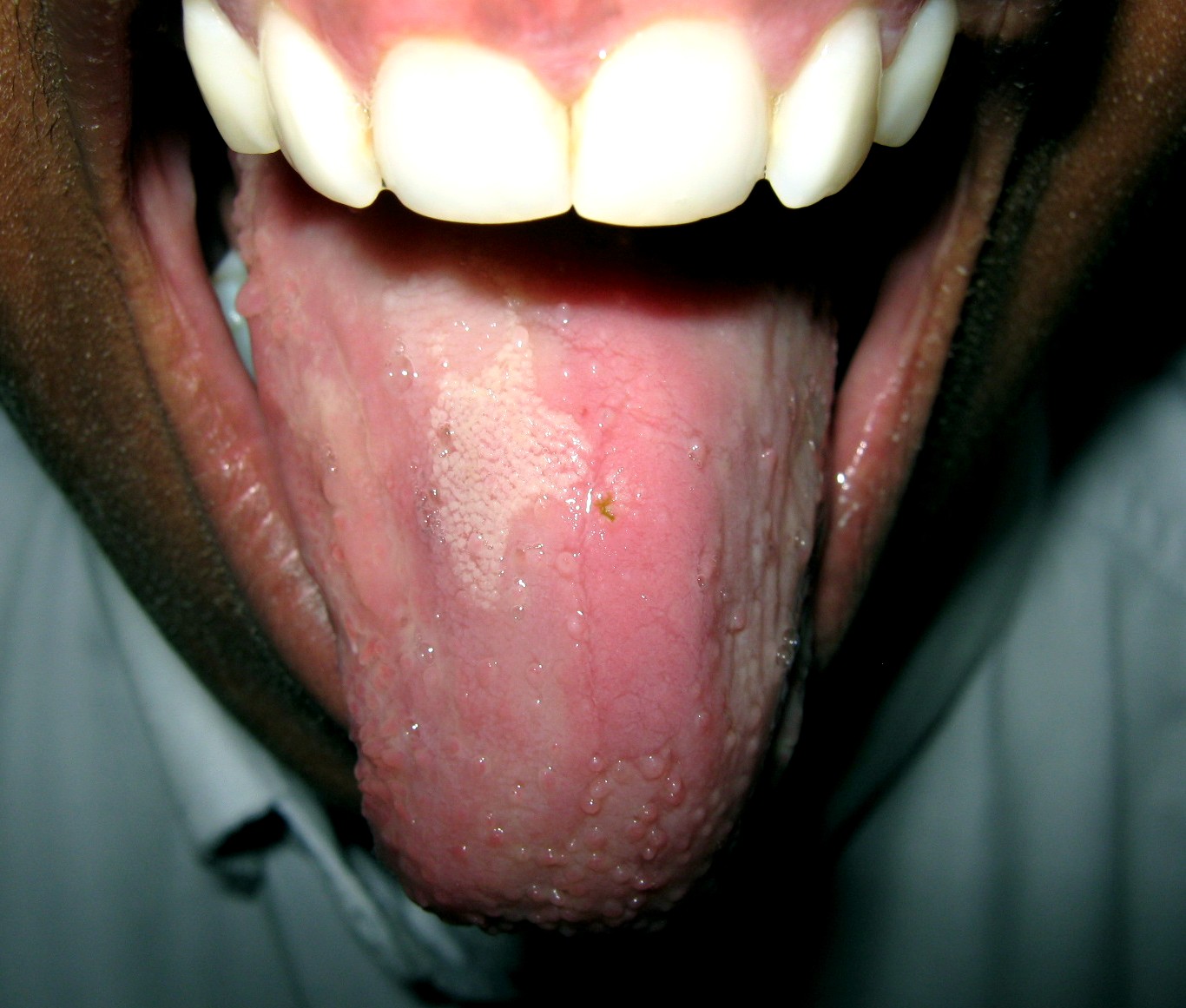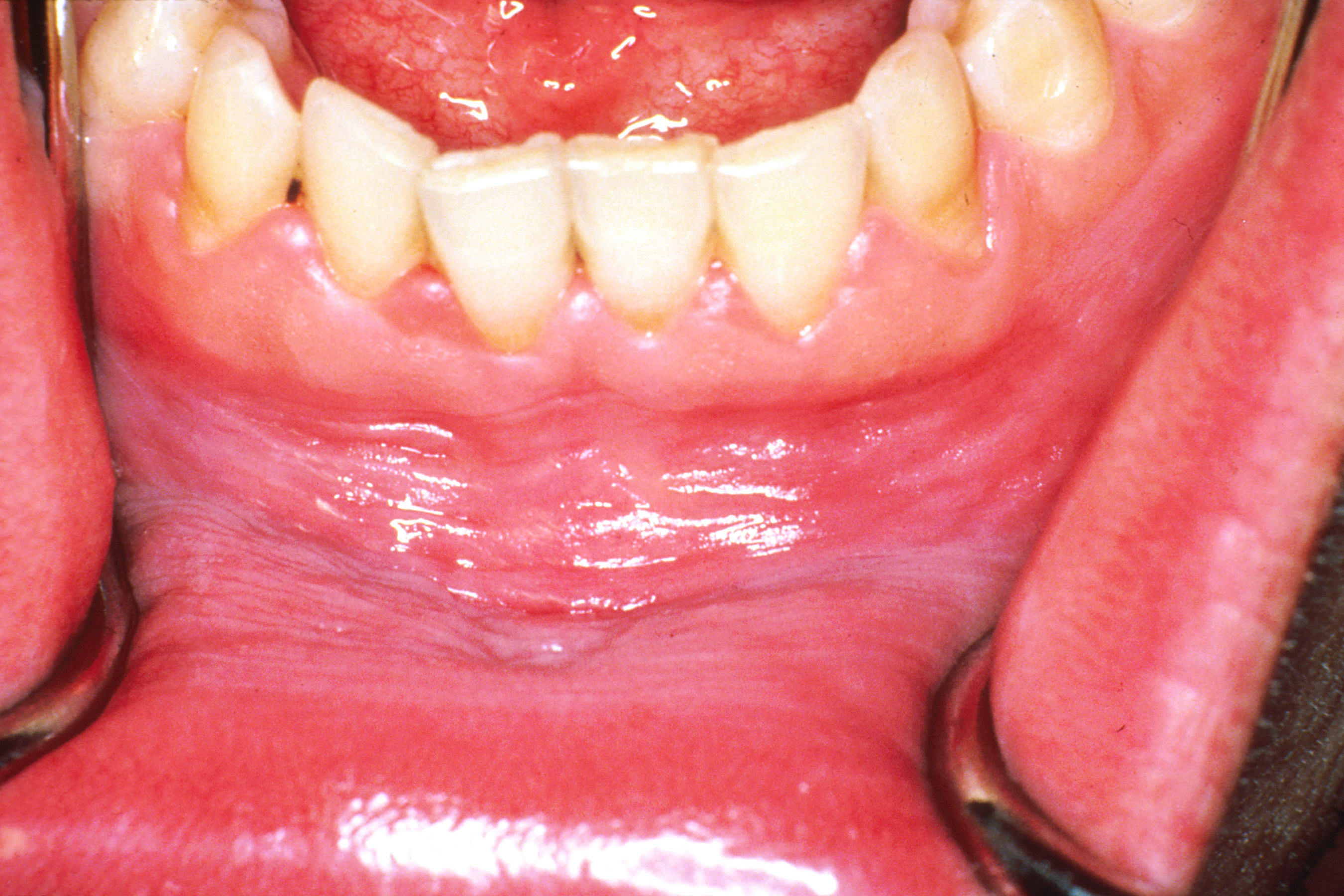|
Oral Candidiasis
Oral candidiasis, also known as oral thrush among other names, is candidiasis that occurs in the mouth. That is, oral candidiasis is a mycosis (yeast/fungal infection) of ''Candida'' species on the mucous membranes of the mouth. ''Candida albicans'' is the most commonly implicated organism in this condition. ''C. albicans'' is carried in the mouths of about 50% of the world's population as a normal component of the oral microbiota. This candidal carriage state is not considered a disease, but when ''Candida'' species become pathogenic and invade host tissues, oral candidiasis can occur. This change usually constitutes an opportunistic infection by normally harmless micro-organisms because of local (i.e., mucosal) or systemic factors altering host immunity. Classification Oral candidiasis is a mycosis (fungal infection). Traditionally, oral candidiasis is classified using the Lehner system, originally described in the 1960s, into acute and chronic forms (see table). Some of the ... [...More Info...] [...Related Items...] OR: [Wikipedia] [Google] [Baidu] |
Infectious Disease (medical Specialty)
Infectious diseases or ID, also known as infectiology, is a medical specialty dealing with the diagnosis and treatment of infections. An infectious diseases specialist's practice consists of managing nosocomial ( healthcare-acquired) infections or community-acquired infections and is historically associated with hygiene, epidemiology, clinical microbiology, travel medicine and tropical medicine. Scope Infectious diseases specialists typically serve as consultants to other physicians in cases of complex infections, and often manage patients with HIV/AIDS and other forms of immunodeficiency. Although many common infections are treated by physicians without formal expertise in infectious diseases, specialists may be consulted for cases where an infection is difficult to diagnose or manage. They may also be asked to help determine the cause of a fever of unknown origin. Specialists in infectious diseases can practice both in hospitals (inpatient) and clinics (outpatient). In hospital ... [...More Info...] [...Related Items...] OR: [Wikipedia] [Google] [Baidu] |
Glossitis
Glossitis can mean soreness of the tongue, or more usually inflammation with depapillation of the dorsal surface of the tongue (loss of the lingual papillae), leaving a smooth and erythematous (reddened) surface, (sometimes specifically termed atrophic glossitis). In a wider sense, glossitis can mean inflammation of the tongue generally. Glossitis is often caused by nutritional deficiencies and may be painless or cause discomfort. Glossitis usually responds well to treatment if the cause is identified and corrected. Tongue soreness caused by glossitis is differentiated from burning mouth syndrome, where there is no identifiable change in the appearance of the tongue, and there are no identifiable causes. Symptoms Depending upon what exact meaning of the word glossitis is implied, signs and symptoms might include: * Smooth, shiny appearance of the tongue, caused by loss of lingual papillae. * Tongue color changes, usually to a darker red color than the normal white-pink color of ... [...More Info...] [...Related Items...] OR: [Wikipedia] [Google] [Baidu] |
Edentulous
Toothlessness, or edentulism, is the condition of having no teeth. In organisms that naturally have teeth, it is the result of tooth loss. Organisms that never possessed teeth can also be described as edentulous. Examples are the members of the former zoological classification Order (biology), order of ''Xenarthra#Evolutionary relationships, Edentata'', which included anteaters and sloths, as they possess no Commonly used terms of relationship and comparison in dentistry, anterior teeth and no or poorly developed Commonly used terms of relationship and comparison in dentistry, posterior teeth. In naturally dentate species, edentulism is more than just the simple presence or absence of teeth. It is biochemically complex because the teeth, jaws, and oral mucosa are dynamic (changing over time). Processes such as bone remodeling (loss and gain of bone tissue) in the jaws and inflammation of soft tissue in response to the oral microbiota are clinically important for edentulous peopl ... [...More Info...] [...Related Items...] OR: [Wikipedia] [Google] [Baidu] |
Denture
Dentures (also known as false teeth) are prosthetic devices constructed to replace missing teeth, and are supported by the surrounding soft and hard tissues of the oral cavity. Conventional dentures are removable (removable partial denture or complete denture). However, there are many denture designs, some which rely on bonding or clasping onto teeth or dental implants (fixed prosthodontics). There are two main categories of dentures, the distinction being whether they are used to replace missing teeth on the mandibular arch or on the maxillary arch. Medical uses Dentures do not feel like real teeth, nor do they function like real teeth. Dentures can help people through: * Mastication or chewing ability is improved by replacing edentulous areas with denture teeth. * Aesthetics, because the presence of teeth gives a natural appearance to the face, and wearing a denture to replace missing teeth provides support for the lips and cheeks and corrects the collapsed appearance that ... [...More Info...] [...Related Items...] OR: [Wikipedia] [Google] [Baidu] |
Denture Related Stomatitis
Denture-related stomatitis is a common condition where mild inflammation and redness of the oral mucous membrane occurs beneath a denture. In about 90% of cases, '' Candida'' species are involved, which are normally a harmless component of the oral microbiota in many people. Denture-related stomatitis is the most common form of oral candidiasis (a yeast infection of the mouth). It is more common in elderly people, and in those who wear a complete upper denture (a denture which replaces all the upper teeth, worn by someone with no natural teeth in their upper jaw). Denture-related stomatitis is more likely to develop when the denture is left constantly in the mouth, rather than removing it during sleep, and when the denture is not cleaned regularly. Signs and symptoms Despite the alternative name for this condition, "denture sore mouth", it is usually painless and asymptomatic. The appearance of the involved mucosa is erythematous (red) and edematous (swollen), sometimes with petech ... [...More Info...] [...Related Items...] OR: [Wikipedia] [Google] [Baidu] |
Erythema
Erythema (from the Greek , meaning red) is redness of the skin or mucous membranes, caused by hyperemia (increased blood flow) in superficial capillaries. It occurs with any skin injury, infection, or inflammation. Examples of erythema not associated with pathology include nervous blushes. Types * Erythema ab igne * Erythema chronicum migrans * Erythema induratum * Erythema infectiosum (or fifth disease) * Erythema marginatum * Erythema migrans * Erythema multiforme (EM) * Erythema nodosum * Erythema toxicum * Erythema elevatum diutinum * Erythema gyratum repens * Keratolytic winter erythema * Palmar erythema Causes It can be caused by infection, massage, electrical treatment, acne medication, allergies, exercise, solar radiation (sunburn), photosensitization, acute radiation syndrome, mercury toxicity, blister agents, niacin administration, or waxing and tweezing of the hairs—any of which can cause the capillaries to dilate, resulting in redness. Erythema is a common sid ... [...More Info...] [...Related Items...] OR: [Wikipedia] [Google] [Baidu] |
Staphylococcus Aureus
''Staphylococcus aureus'' is a Gram-positive spherically shaped bacterium, a member of the Bacillota, and is a usual member of the microbiota of the body, frequently found in the upper respiratory tract and on the skin. It is often positive for catalase and nitrate reduction and is a facultative anaerobe that can grow without the need for oxygen. Although ''S. aureus'' usually acts as a commensal of the human microbiota, it can also become an opportunistic pathogen, being a common cause of skin infections including abscesses, respiratory infections such as sinusitis, and food poisoning. Pathogenic strains often promote infections by producing virulence factors such as potent protein toxins, and the expression of a cell-surface protein that binds and inactivates antibodies. ''S. aureus'' is one of the leading pathogens for deaths associated with antimicrobial resistance and the emergence of antibiotic-resistant strains, such as methicillin-resistant ''S. aureus'' (MRSA ... [...More Info...] [...Related Items...] OR: [Wikipedia] [Google] [Baidu] |
Angular Cheilitis1
Angular may refer to: Anatomy * Angular artery, the terminal part of the facial artery * Angular bone, a large bone in the lower jaw of amphibians and reptiles * Angular incisure, a small anatomical notch on the stomach * Angular gyrus, a region of the brain in the parietal lobe * Angular vein, formed by the junction of the frontal vein and supraorbital vein Other uses * Angular (web framework), an open-source web platform **AngularJS, the first incarnation of Angular * Angle, having an angle or angles * Angular diameter, describing how large a sphere or circle appears from a given point of view ** Angular diameter distance, used in astronomy * Angular Recording Corporation Angular Recording Corporation was an independent record label founded in New Cross, South East London. It was established in June 2003 by two ex-Goldsmiths College students, Joe Daniel and Joe Margetts, who reclaimed a local Ordnance Survey Tr ..., a British independent record label See also * Angle (dis ... [...More Info...] [...Related Items...] OR: [Wikipedia] [Google] [Baidu] |
Leukoplakia
Oral leukoplakia is a ''potentially malignant disorder'' affecting the oral mucosa. It is defined as "essentially an oral mucosal white lesion that cannot be considered as any other definable lesion." Oral leukoplakia is a white patch or plaque that develops in the oral cavity and is strongly associated with smoking. Leukoplakia is a firmly attached white patch on a mucous membrane which is associated with increased risk of cancer. The edges of the lesion are typically abrupt and the lesion changes with time. Advanced forms may develop red patches. There are generally no other symptoms. It usually occurs within the mouth, although sometimes mucosa in other parts of the gastrointestinal tract, urinary tract, or genitals may be affected. The cause of leukoplakia is unknown. Risk factors for formation inside the mouth include smoking, chewing tobacco, excessive alcohol, and use of betel nuts. One specific type is common in HIV/AIDS. It is a precancerous lesion, a tissue alteration i ... [...More Info...] [...Related Items...] OR: [Wikipedia] [Google] [Baidu] |
Buccal Mucosa
The oral mucosa is the mucous membrane lining the inside of the mouth. It comprises stratified squamous epithelium, termed "oral epithelium", and an underlying connective tissue termed ''lamina propria''. The oral cavity has sometimes been described as a mirror that reflects the health of the individual. Changes indicative of disease are seen as alterations in the oral mucosa lining the mouth, which can reveal systemic conditions, such as diabetes or vitamin deficiency, or the local effects of chronic tobacco or alcohol use. The oral mucosa tends to heal faster and with less scar formation compared to the skin. The underlying mechanism remains unknown, but research suggests that extracellular vesicles might be involved. Classification Oral mucosa can be divided into three main categories based on function and histology: *Lining mucosa, nonkeratinized stratified squamous epithelium, found almost everywhere else in the oral cavity, including the: **Alveolar mucosa, the lining between ... [...More Info...] [...Related Items...] OR: [Wikipedia] [Google] [Baidu] |
Lingual Papillae
Lingual papillae (singular papilla) are small structures on the upper surface of the tongue that give it its characteristic rough texture. The four types of papillae on the human tongue have different structures and are accordingly classified as circumvallate (or vallate), fungiform, filiform, and foliate. All except the filiform papillae are associated with taste buds. Structure In living subjects, lingual papillae are more readily seen when the tongue is dry. There are four types of papillae present on the tongue: Filiform papillae Filiform papillae are the most numerous of the lingual papillae. They are fine, small, cone-shaped papillae covering most of the dorsum of the tongue. They are responsible for giving the tongue its texture and are responsible for the sensation of touch. Unlike the other kinds of papillae, filiform papillae do not contain taste buds. They cover most of the front two-thirds of the tongue's surface. They appear as very small, conical or cylindrical s ... [...More Info...] [...Related Items...] OR: [Wikipedia] [Google] [Baidu] |







